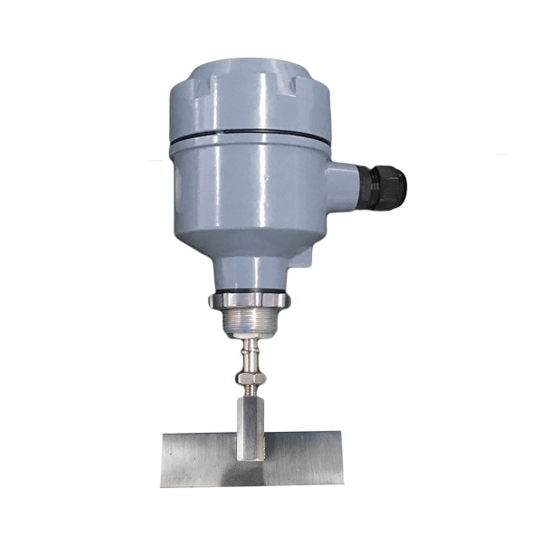
- Stock: In Stock
- Model: RDDLZ-PLS-0415
- Weight: 1.00
- SKU: RDDLZ-PLS-0415
Available Options
Paddle level switch is a level sensor used in industrial applications to monitor and control the level of bulk solids or liquids in tanks, bins, or hoppers. It consists of a paddle or blade that extends into the substance being measured. When the material reaches a certain level, it interacts with the paddle, causing it to pivot or rotate.
Features
- Three bearings support the rotary paddle level switch, it operates reliably.
- The sealing design prevents dust from penetrating along the shaft.
- The torque is stable and reliable, and the force is adjustable; the blades bear excessive load and the clutch automatically slips to protect the motor from damage.
- Internal components can be easily inspected and repaired without having to dismantle the tank as a whole.
- The junction box is IP65 designed, has good sealing performance and is reliable for outdoor installation and use.
- Rotary paddle level switch is light weight and easy to install.
- It is suitable for many industries such as steel, cement, electricity, feed, chemical plastics, fertilizers, etc.
Specification
| Model | RDDLZ-YN20-AAS |
| Power Supply (Optional) | 220V AC, 110V AC, 24V DC |
| Power Consumption | 4W |
| Contact Capacity | 250V AC, SPDT (Single Pole Double Throw) |
| Blade Speed | 1rpm |
| Torque | 1.0kg x em |
| Material Density | ≥0.5g/liter |
| Working Temperature | -10~80℃ (400℃ can be customized) |
| Insulation Resistance | ≥100MΩ |
| Dielectric Strength | 1500V x 1min |
| Protection Level | IP65 |
| Blade Material | SUS304 Stainless Steel |
Torque Adjustment
Applications
Tips: What is a paddle level switch?
A paddle level switch is a device used to detect the level of material in a tank or silo. It typically consists of a paddle or blade that extends into the vessel, and when the material reaches a certain level, it activates a switch mechanism. The switch can then be used to control other equipment or provide an alert.
When the material in the tank or silo comes into contact with the paddle, it causes the paddle to pivot or move. This movement is sensed by the switch mechanism, triggering a response. Paddle level switches are commonly used in industrial and process applications to monitor and control the level of powders, granular materials, liquids, or bulk solids.
These devices are useful for preventing overfilling or emptying of tanks, ensuring efficient material handling, and providing safety measures in various industrial processes. Its junction box has good sealing performance and is suitable for outdoor installation and use. Paddle level switches are often chosen for their simplicity, reliability, and cost-effectiveness in level detection applications.
